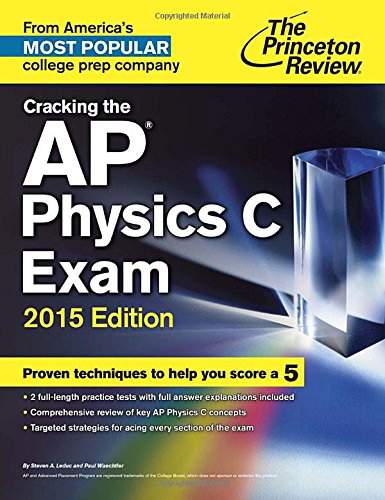Connecting...

This is a quick preview of the lesson. For full access, please Log In or Sign up.
For more information, please see full course syllabus of AP Physics C: Mechanics
For more information, please see full course syllabus of AP Physics C: Mechanics
AP Physics C: Mechanics Atwood Machines
Lecture Description
Another very common real-world physics problem will involve something called an Atwood machine, which is essentially a mass that’s used to pull another mass upwards. In ideal situations, the mass of the string and friction will be negligible unless otherwise stated. As with most problems, the best way to approach an Atwood is to draw a free-body diagram to show the forces, then use 1 dimension mechanics to solve for what you need. Thankfully, there is no x-component or real radial component to consider, unless friction is a factor. With this we have everything we need to make the next step into the world of mechanics: work.
Bookmark & Share
Embed
Share this knowledge with your friends!
Copy & Paste this embed code into your website’s HTML
Please ensure that your website editor is in text mode when you paste the code.(In Wordpress, the mode button is on the top right corner.)
×
Since this lesson is not free, only the preview will appear on your website.
- - Allow users to view the embedded video in full-size.
Next Lecture
Previous Lecture













































1 answer
Fri Jul 3, 2020 10:11 AM
Post by Chessdongdong on July 3, 2020
Why does Example 4 not have a slanted free-body diagram?
1 answer
Wed Sep 2, 2015 5:11 AM
Post by Parth Shorey on September 1, 2015
In the figure below How much force would we need to exert on the free end of the cord in order to lift the plank (mass M= 300 kg) with constant velocity ? (Ignore the masses of the pulleys)?
*So basically there are 6 pulleys, but what I don't understand why is it Mg/6? Why did they use 6 and what did the 6 represent? I understand there are 6 pulleys but why was it added to determine force?
1 answer
Tue Sep 1, 2015 4:52 AM
Post by Parth Shorey on August 31, 2015
I just have a really long question, just making sure if your still online to reply. Considering the last comment was in 2014!
1 answer
Sun Dec 7, 2014 3:31 PM
Post by Dawud Muhammad on December 6, 2014
hey professor.??..how will the addition prcoess work when u add mass of the pulley and and the radius(m1g+m2g=Ia)....??